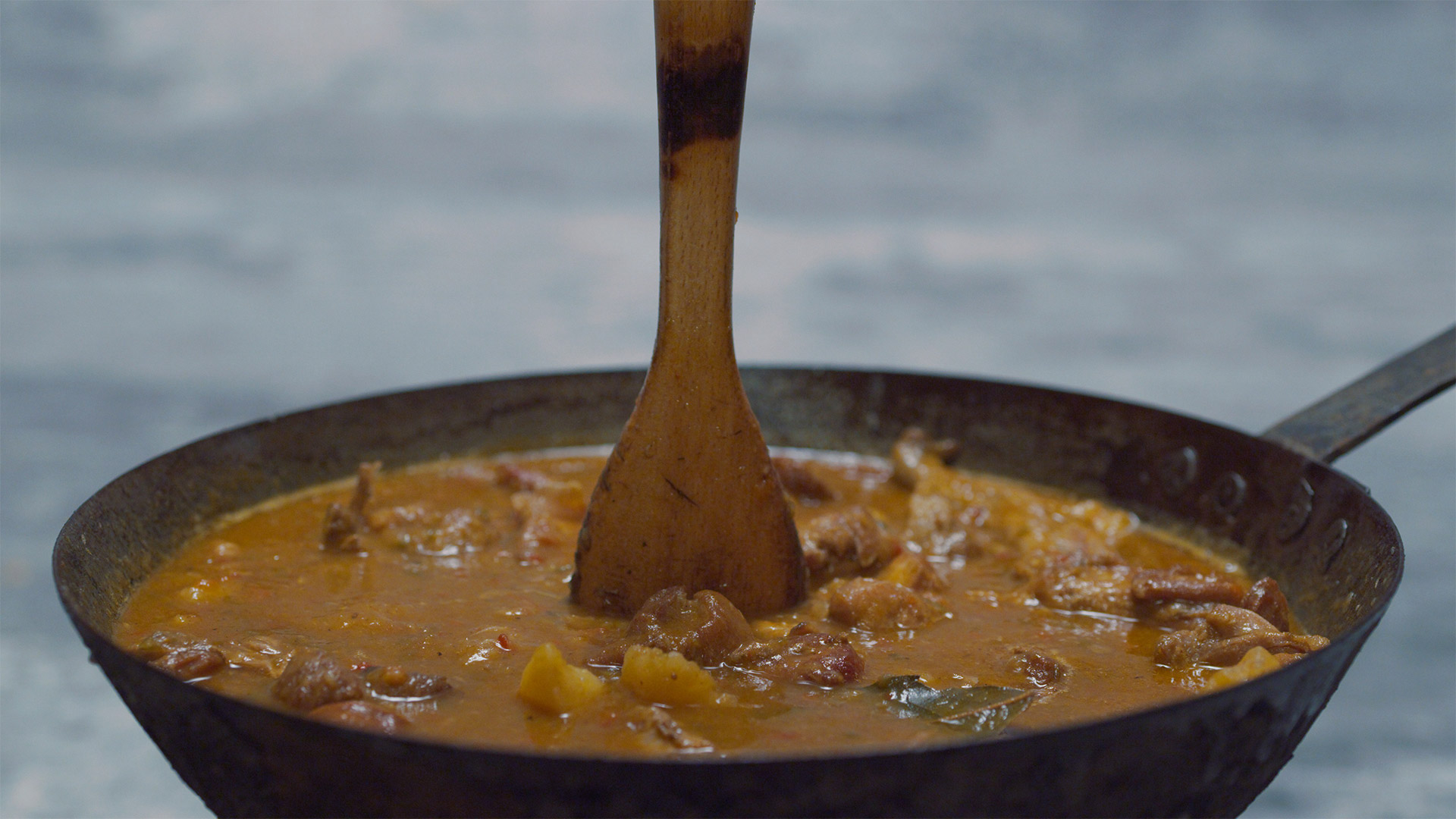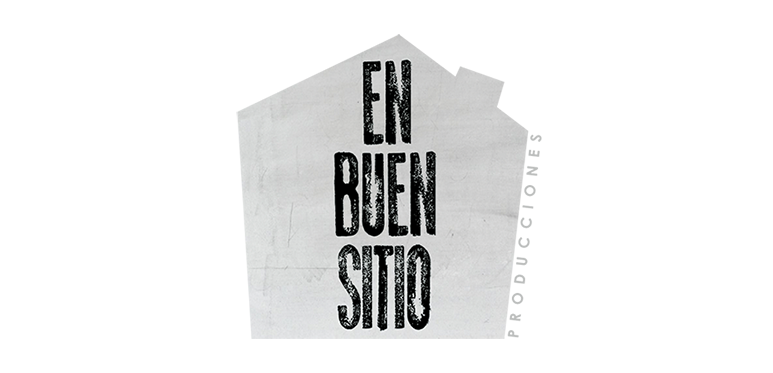Navarra inmaterial – Nafarroa inmateriala
Credits ↴
Book ↴
® All rights reserved 2025
Calderete
Kalderetea
Calderete
CAST
|
EUS
|
ENG
Técnica
Alimentación
Elikadura
Teknika
Cuisine
Technique
Bargota
Raquel Punzano Cintas
Verduarte
Raquel Punzano Cintas
Verduarte
Bargota
Raquel Punzano Cintas
Verduarte
Raquel Punzano Cintas
Verduarte
Bargota
Raquel Punzano Cintas
Verduarte
Raquel Punzano Cintas
Verduarte
“No hay fiesta, sobre todo en la Ribera Navarra, sin calderete. Y cada uno es distinto, aunque lo haga la misma persona siempre, hay un toque diferente”.
Es un guiso de campo, también conocido por calderillo. Está formado comúnmente por carne -conejo o cordero-, aceite, cebolla, ajos, patatas y agua. Toma su nombre del recipiente metálico en que se cocina.
Desde la Ribera navarra se ha extendido por toda la región. Es la forma colectiva de comida mas frecuente en todo tipo encuentros (fiestas, cacerías, romerías…). Se deja hervir sin dar vueltas al guiso, para que no se rompan las patatas. Para ver si está hecho, se pone la cuchara de madera en el centro del calderete hasta que se mantenga tiesa y firme. Se saca del fuego y se deja reposar durante media hora antes de tomarlo.
“Ez dago kaldereterik gabeko jairik, are gutxiago Nafarroako Erriberan. Eta guztiak ezberdinak dira. Beti pertsona berberak egin arren, aldiro ukitu ezberdina du”.
Landa-gisatu bat da, gaztelaniaz calderillo izenez ere ezaguna. Haragia (untxia edo arkumea), olioa, tipula, baratxuria, patata eta urez egiten da. Izena kozinatzen den metalezko ontziari zor zaio.
Nafarroako Erriberatik eskualde osora zabaldu da. Mota guztietako topaketetan (jaietan, ehizaldietan, erromerietan) gehien erabiltzen den janari-modu kolektiboa da. Irakiten uzten da gisatuari bueltarik eman gabe, patatak hauts ez daitezen. Egina dagoenetz ikusteko, egurrezko koilara kalderetearen erdian jartzen da; tente eta irmo mantentzen bada, prest dago. Sutik atera eta jan aurretik ordu erdiz pausatzen uzten da.
“There isn’t a party without calderete, especially in the Navarrese Ribera region. And each one is different; even if the same person makes it, it always has a different touch.”
It is a country-side stew, also known as calderillo. Its ingredients are usually meat – rabbit or lamb – olive oil, onions, garlic, potatoes, and water. The name comes from the metallic pot where it is cooked.
It has expanded throughout the region from the Ribera. The calderete is the most common shared food in all kinds of gatherings (parties, hunting trips, processions…). The stew is brought to a boil without removing it, so the potatoes do not break. To check if it is ready, a wooden spoon is placed in the middle of the stew until it stands firm. The pot stands for half an hour after coming out of the fire.
Ver detalles:

1



